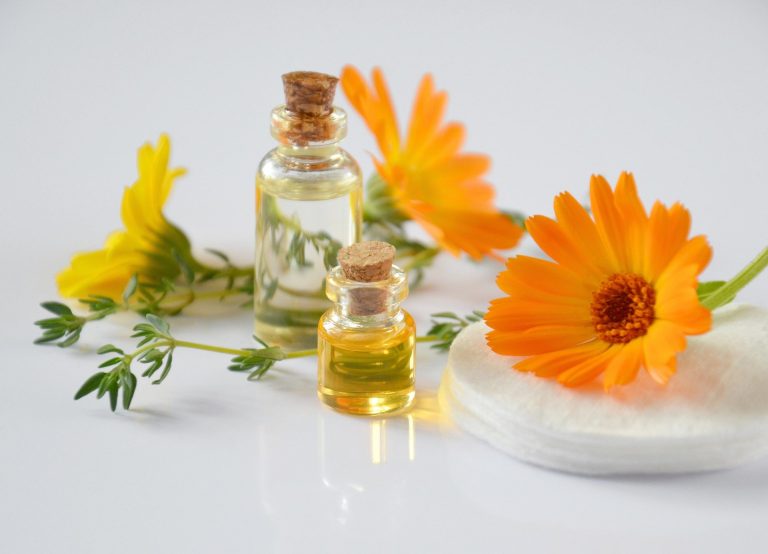
Every time you smell the petal of a flower, walk through a pine forest, peel a citrus fruit, touch the leaf of a medicinal herb or use a spice, you smell a scent. These are the essential oils inside the plants.
But what are these substances, and what is so special about them? Let’s find out together.
What Are Essential Oils?
Essential oils are complex mixtures of odorous molecules produced by plants. In other words, they are highly concentrate volatile aromatic substances.
We can find them in leaves, flowers, pods, berries, resin, seeds, flowering tops and branches, citrus peel and wood.
Sometimes several essential oils can be extracted from the same plant, each with its own physical and olfactory characteristics. A good example is the Orange tree, from which we can get three distinct essential oils. In fact, one comes from leaves and twigs (Petit Grain), one from flowers (Neroli) and one from the peel of the fruit (Sweet Orange). Although the name suggests oily substances, essential oils are not fatty oils such as olive oil, almond oil, wheat germ oil, coconut oil, jojoba oil. In fact, you can dilute them inside these oils with great ease.
The nature of essential oils recalls the element fire. In fact, they are flammable substances, which burn instantly upon contact with flame. Volatility is one of their main characteristics. Not surprisingly, they are the most etheric part of the plant – its scent. Pure essential oils generally have a strong and pleasant smell. Although they are not soluble in water, they can easily be used in any fat or oily compound, as well as in honey, salt or alcohol.
How to Use Them
There are several ways to use essential oils, since they have several physical and aromatherapy properties. Let’s try to outline some of the most common ones:
- Environmental diffusion: energizing oils in the morning and during study or work hours, relaxing and balancing oils in the evening;
- Aromatherapy massage: circulatory, anti-rheumatic, purifying or decontracting, depending on the oil or mixture used;
- Foot and hand baths;
- Areosol: choose expectorant and mucolytic oils in case of cooling diseases;
- Treating canker sores, herpes, warts, fungi (with anti-viral, antiseptic and antifungal oils);
- DIY Biocosmetics: face creams, masks, tonics, shampoos, soap;
- Cleaning: you’ll be amazed at how many surfaces and objects you can sanitize and polish with bicarbonate, citric acid and essential oil;
- Laundry: again bicarbonate and essential oil can replace your fabric softener and perfume your laundry;
- Perfume cabinets, drawers, boxes, letters, bookmarks;
- Punctures and burns: you can use some emollient, anti-inflammatory and cell regenerating oils;
- Motion sickness: Some oils fight against motion sickness, driving away the feeling of nausea.









